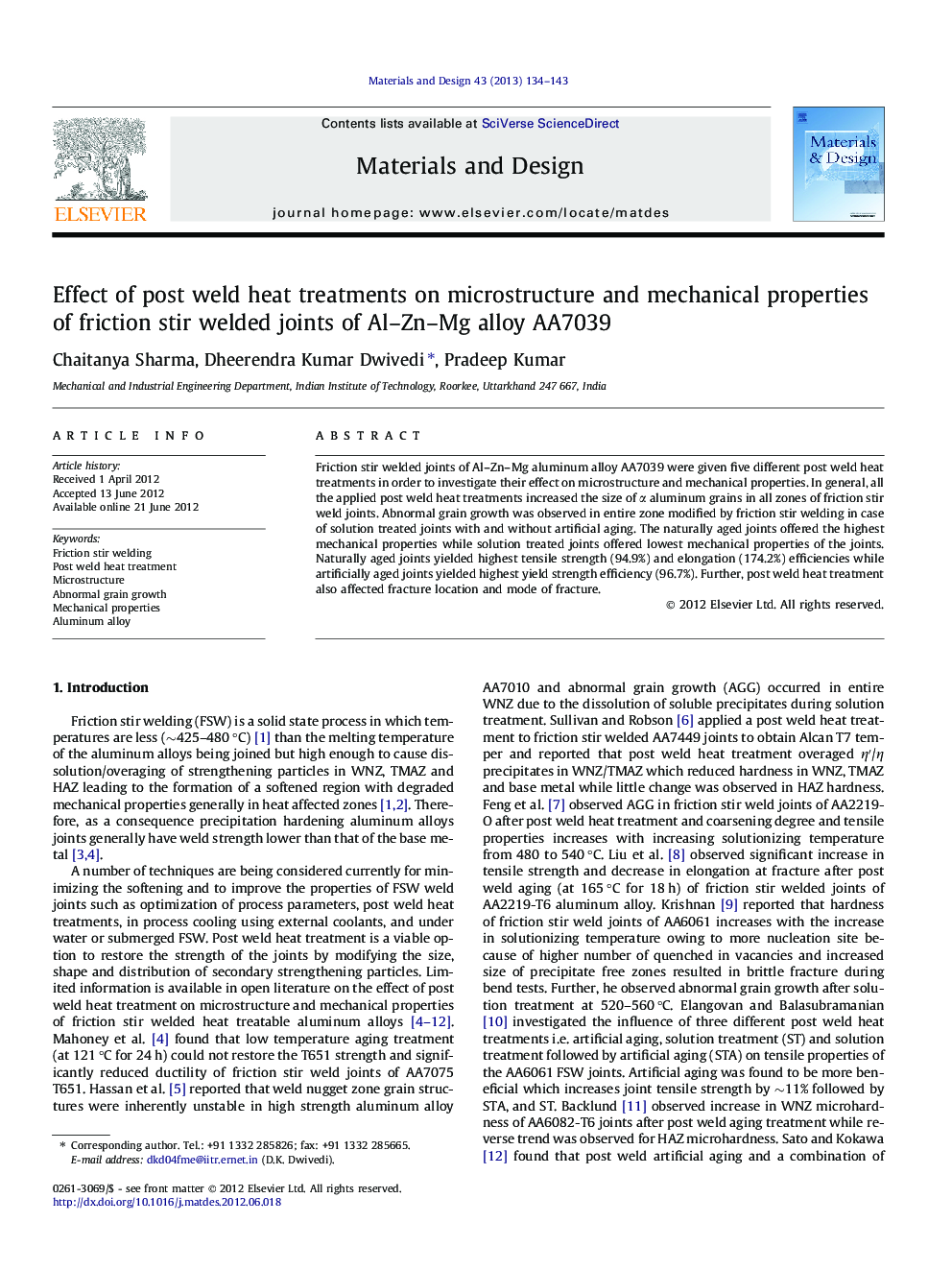| Article ID | Journal | Published Year | Pages | File Type |
|---|---|---|---|---|
| 830394 | Materials & Design (1980-2015) | 2013 | 10 Pages |
Friction stir welded joints of Al–Zn–Mg aluminum alloy AA7039 were given five different post weld heat treatments in order to investigate their effect on microstructure and mechanical properties. In general, all the applied post weld heat treatments increased the size of α aluminum grains in all zones of friction stir weld joints. Abnormal grain growth was observed in entire zone modified by friction stir welding in case of solution treated joints with and without artificial aging. The naturally aged joints offered the highest mechanical properties while solution treated joints offered lowest mechanical properties of the joints. Naturally aged joints yielded highest tensile strength (94.9%) and elongation (174.2%) efficiencies while artificially aged joints yielded highest yield strength efficiency (96.7%). Further, post weld heat treatment also affected fracture location and mode of fracture.
► Different post weld heat treatments were performed on FSW joints of AA7039 alloy. ► Welds were characterized through tensile, microhardness test, OM and SEM. ► Natural aging increased tensile properties while solution treatment decreased the same. ► Solution treatment with & without artificial aging resulted in abnormal grain growth. ► Post weld heat treatments affected fracture location and mode of fracture.
